Cut to: 4 Oscar-Nominated Editors Analyzing Pivotal Moments in Their Films
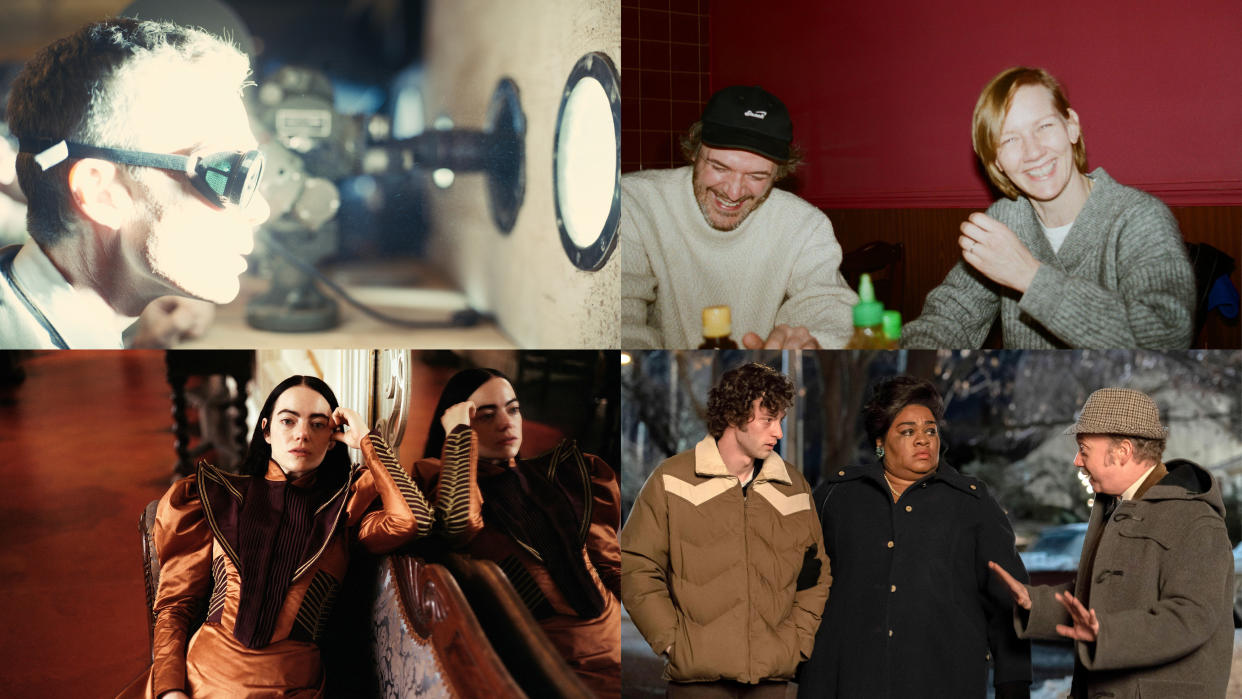
- Oops!Something went wrong.Please try again later.
- Oops!Something went wrong.Please try again later.
- Oops!Something went wrong.Please try again later.
- Oops!Something went wrong.Please try again later.
[Editor’s note: IndieWire reached out to “Killers of the Flower Moon” editing nominee Thelma Schoonmaker, but she was unavailable to participate.]
This season’s Best Editing Oscar nominees (which are also nominated for Best Picture) all explore existential crises, which make them dramatically compelling and relatable. Four of the editors — Laurent Sénéchal (“Anatomy of Fall”), Kevin Tent (“The Holdovers”), Jennifer Lame (“Oppenheimer“), and Yorgos Mavropsaridis (“Poor Things”) — selected a pivotal scene or sequence that best showcases their work, telling IndieWire how the scenes explore rhythm and pace, character importance, and why it was so challenging to get right.
More from IndieWire
In Justine Triet’s gripping murder mystery, “Anatomy of a Fall,” Sénéchal delicately balances point of view through memory and imagination, as Best Actress nominee Sandra Hüller stands trial for the murder of her husband. Through this crucible, the novelist is forced to confront love, marriage, parenting, guilt, fear, regret, and ruthless ambition.
In Alexander Payne’s “The Holdovers,” Tent deftly balances whimsy and melancholy, as Best Actor nominee Paul Giamatti plays a cantankerous New England boarding school history teacher forced to confront demons from his past. The catalyst: an unlikely bond with troubled student Dominic Sessa over the 1970 Christmas break.
Christopher Nolan’s frontrunning “Oppenheimer” provided Lame with interlocking, subjective POVs of theoretical physicist J. Robert Oppenheimer (Best Actor nominee Cillian Murphy) in color (“Fusion”) and antagonist Admiral Lewis Strauss (Best Supporting Actor nominee Robert Downey Jr.) in black-and-white (“Fission”). However, the success of the atomic bomb unleashes a chain reaction of fear and guilt in Oppenheimer about the future of the world’s existence.
Yargos Lanthimo’s “Poor Things,” the surreal “Frankenstein” gender-bender starring Best Actress nominee Emma Stone as Bella, who’s re-animated from the dead, provided Mavropsaridis the opportunity to navigate sudden shifts in tone, locale, and visual style that define Bella’s extraordinary journey as a liberated, unconventional Victorian woman ahead of her time.
‘Anatomy of a Fall’: The Opening Foundations
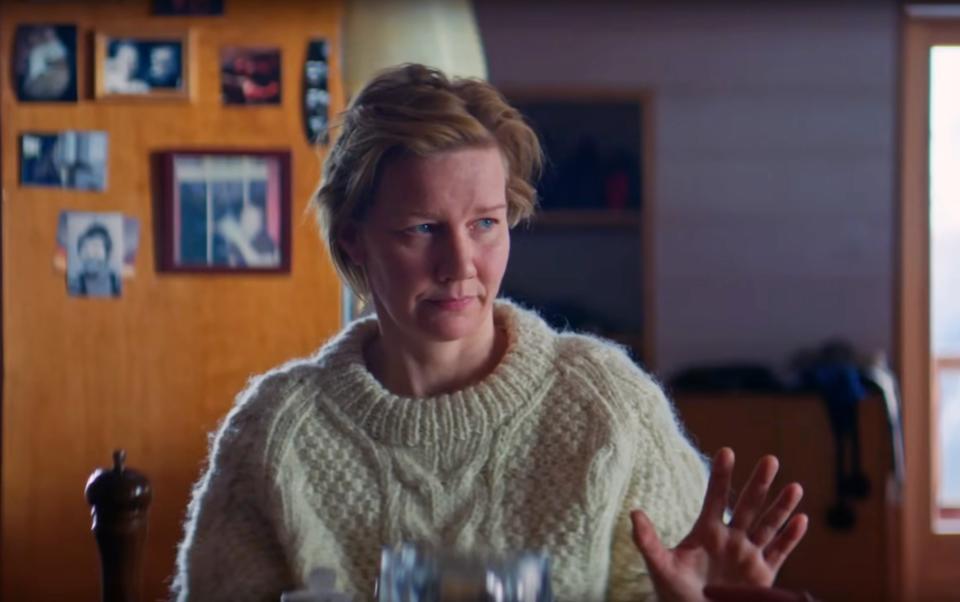
Sénéchal chose the opening scene not only because it was one of the sequences they worked on the most, but also because of the complex structural foundations that are laid out so brilliantly, in particular, the importance of sound (led by sound designer Fanny Martin and re-recording mixer Olivier Goinard).
“The scene is built in layers, waves, and levels. In the darkness, Sandra Hüller’s captivating voice asks: ‘What do you want to know?’ We are immediately drawn into an intimate relationship with this character, around whom this question will resonate throughout the film. In a cut, we see the staircase where the dog [Snoop], who will be at the heart of the film, appears (the film also ends with him).
“The editing then weaves together three scenes on the three floors of the chalet: the almost too-intimate conversation (we used exclusively the close-up shots) between the two women [Hüller and a student interviewer], the child [Milo Machado-Graner], whose handicap we can only guess at, washing his dog, and the father [Samuel Theis] upstairs (who exists only through sound) with his work and, above all, his music, which ends up invading the whole space to the point of interrupting the conversation. Following the student, we discover the establishing shot: We’re perched in the mountains. This complex present, partly recorded by the student, will be literally dissected during the trial.”
‘The Holdovers’: The Nighttime School Montage
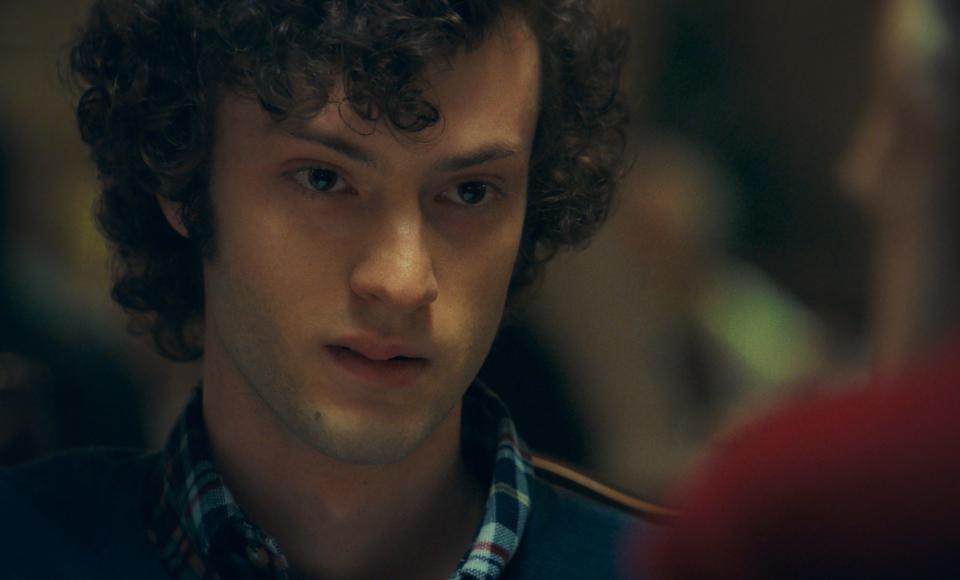
Tent chose a key sequence involving Giamatti’s opponent, Sessa’s Angus Tully. This was the montage where Angus steals Paul’s keys and traipses around the school at night, which continually evolved and improved.
“The montage was originally scripted to appear in its current position. As we condensed and rearranged the order of the shots, we saw opportunities for some cool and interesting dissolves (our first evolutionary step in the sequence). None of which would have happened without [cinematographer] Eigil Byrld’s beautiful framing and photography, with its shadows and darkened negative spaces. The dissolves not only conveyed the passage of time but also added emotional resonance to the scene and somehow reinforced Angus’ loneliness.
“One of my favorites is transitioning from Angus in the hall to him at the piano lighting the joint. It’s magical. In the script, the sequence ended at this point with the intent to darken the auditorium windows, so it still appeared to be night. Meanwhile, there was another scene later in the film, in which Mary [Best Supporting Actress nominee Da’Vine Joy Randolph] finds Angus in the church looking at her son’s photo. This serious and somber moment was scripted and tied to the humorous beat of Paul throwing the football in the snow. Both great scenes, but the shift in tone didn’t work. And, for a very short period of time, the scene with Mary and Angus was tabled. But it was too good to drop, so when looking for a place where it could go, we tried moving it to the end of the montage. This did great things for us and was the sequence’s next big evolutionary step.
“Moving the scene and incorporating it into the montage added an emotional punch that was unexpected and needed. Otherwise, the montage could have been just about some punk kid partying all night. Instead, Angus not only ate ice cream, drank wine, and smoked a joint, he ended his all-nighter in a contemplative, self-aware moment reflecting on his life and that of Curtis Lamb (Mary’s son). This gave Angus’ character so much more depth, and because it came earlier in the film (roughly 15 minutes in real time, which is exponential in movie time), it started the bonding process between Mary and Angus sooner, just about the time the audience was likely hungry for something new to absorb and chew on. Tonally, the scene not only fit but supported the melancholy nature of the whole sequence and that section of the film.
“I think, for the audience, there is also something very relatable about being up all night, feeling groggy, a little hungover, and vulnerable. This, I suspect, strengthened their empathy and sympathy for Angus. The scene’s final evolution came about when our music editor Richard Ford suggested we try ‘Crying, Laughing, Loving, Lying’ by Labi Siffre. We had tried various songs and scores, but nothing seemed right. Labi’s was perfect with its lonely haunting feel and lyrics. By adjusting the length of the sequence and editing the song, we were able to have it finish/resolve naturally and deliver us (via a long dissolve) to the photo of Curtis Lamb. We let the rest of the scene play in near silence: just the echoing sounds of Mary’s entrance and the creaking sounds of an old, cold church.”
‘Oppenheimer’: The Breakdown in the Woods
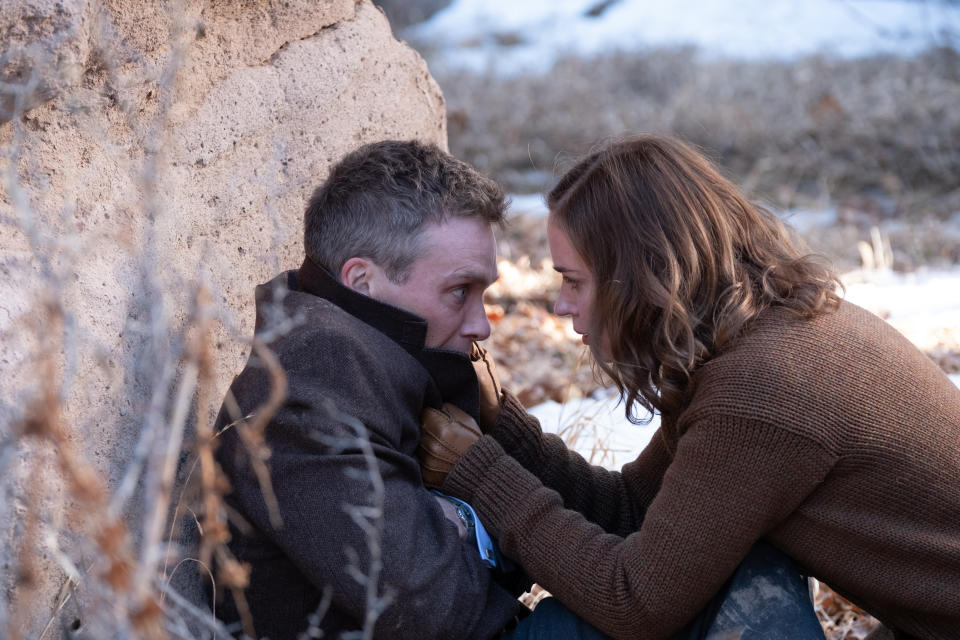
Lame chose the scene after Oppenheimer gets the call about Jean’s (Florence Pugh) death and Kitty (Best Supporting Actress nominee Emily Blunt) goes to find him in the woods. Oppenheimer recounts what has happened to Jean while also confessing to his wife about his ongoing affair.
“The scene comes at a pivotal moment for Oppenheimer as the pressure is mounting from infighting amongst scientists involved in the Manhattan Project, as well as growing frustration from the military regarding security and wanting a date for the test. The scene was challenging not only because it’s such a vulnerable moment for Oppenheimer, as he rarely breaks down in the film or shows much emotion, but also a crucial moment in the relationship between him and Kitty.
“For the longest time, we had a take in the film where Robert was staring straight ahead and sobbing and we played a lot of the scene on him, but as we continued through many versions of the film, it became clear that playing more of the scene on Kitty and choosing a performance where Oppenheimer was looking down, ashamed of what he had done to both Jean and Kitty, worked so much better. The quick cutaways to Jean’s suicide/murder took quite a long time to calibrate. Oppenheimer himself barely wanted to see the horrifying images that he was creating in his mind for more than a few seconds, so we played around with how short we could make them without it being too abstract.”
‘Poor Things’: The Dance as Microcosm
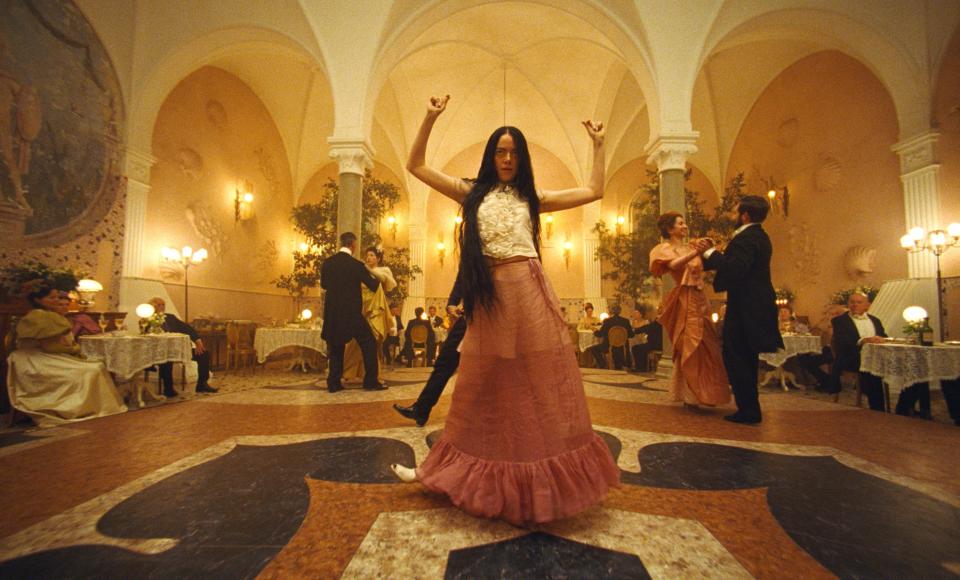
Mavropsaridis chose the dance sequence aboard the ocean liner because the choreography serves as a microcosm of Bella always under the control of men. This was the aim of the edit. It’s also worth noting that dance is a recurring theme in Lanthimos’ films: expressing different themes and emotions, culled from the “biomechanics” of Russian filmmaker Vsevolod Meyerhold.
“The first cut was almost double the length of the final edit. We followed the whole choreography, but we felt we were missing the essence of her excitement and the basic aim of the scene, which was to mirror [Bella’s] struggles to free herself from Duncan’s control and to be free for new experiences. So a lot of the choreography and the respective music was eliminated. The edit focuses on this idea but without losing the fun of the situation.
“A long shot establishes the place: In the foreground Bella and Duncan order their dinner, people dance in the background, further back the live orchestra. During their brief discussion, we discover that Bella starts feeling disillusioned by Duncan’s [Best Supporting Actor nominee Mark Ruffalo] controlling attitude. We emphasize the seriousness of her feelings by cutting to Bella in close-ups. During this discussion, Bella’s attention is captivated by a rhythmic beat. Self-absorbed Duncan looks down; we cut to a medium shot of Bella from the reverse angle, looking towards the orchestra. Bella is obviously fascinated and excited by what she hears and sees and gives no attention to Duncan’s monologue.
“The timing in this part of the scene is crucial; the edit must inform the viewer of her new interest while Duncan, self-absorbed, looks down without noticing her. Bella, excited, gets up from her chair. Duncan still does not notice it. In a long shot, Bella takes a step forward towards the dance floor. We cut to a shot of a musician playing a strange organ; he is actually [Oscar-nominated composer] Jerskin Fendrix.
“Bella, excited like the teenager she mentally is, with no inhibitions, rushes to the dance floor with awkward movements. She never took dancing lessons, but, all the same, she abandons herself to the beat without caring what people will think of her. Her moving forward is emphasized by the camera tracking back. The scene was shot [by Oscar-nominated cinematographer Robbie Ryan] with two cameras; there were plenty of choices, but the guiding principle was Bella’s subjectivity and feelings, as in all the film.
“Duncan enters the frame improvising his movements with the aim to control her and bring her back to the table: ‘polite society’ is watching. All around them, the other dancers perform a ‘civilized’ dance, acting as polite society’s mirror. Duncan grabs her, she resists with a manoeuvre that allows her to put her arm around his neck. Duncan, trying not to attract attention, pretends that this is part of their dance. Bella gets more aggressive, turning him around as he struggles to free herself. The rhythmic beats start again; they both follow them improvising what they see the other dancers doing.
“Duncan pretends to be enjoying the whole situation but forcefully grabs her again; she manages one more time to free herself. Duncan follows her, pretending to dance, and this time grabs her for good and forces her back at the table. He starts another monologue, this time trying to manipulate her thoughts, but Bella has lost interest. She is blinking to a stranger; responding to his blinking “out of polite.” Duncan angrily gets up. We see the fight from Bella’s POV in the [more heightened] 4mm lens; the cut makes the narrative stay with Bella’s subjectivity: She is a child watching two giants fight for her. She quickly loses interest as a young couple offers Bella the prospect of a new experience: more dancing in town.
“Bella agrees; she does not fear trying new experiences. We cut to another angle as Duncan enters the frame, throwing himself on the young man Bella was leaving with, allowing in the edit for a brief delay between the cuts to emphasize the speed and distance of his jump, as well as his desperation. It’s the start of his disintegration; in Paris, he will have lost all his composed attitude.”
Best of IndieWire
Where to Watch This Week's New Movies, Including 'Argylle' and 'How to Have Sex'
Christopher Nolan's Favorite Movies: 40 Films the Director Wants You to See
Sign up for Indiewire's Newsletter. For the latest news, follow us on Facebook, Twitter, and Instagram.

